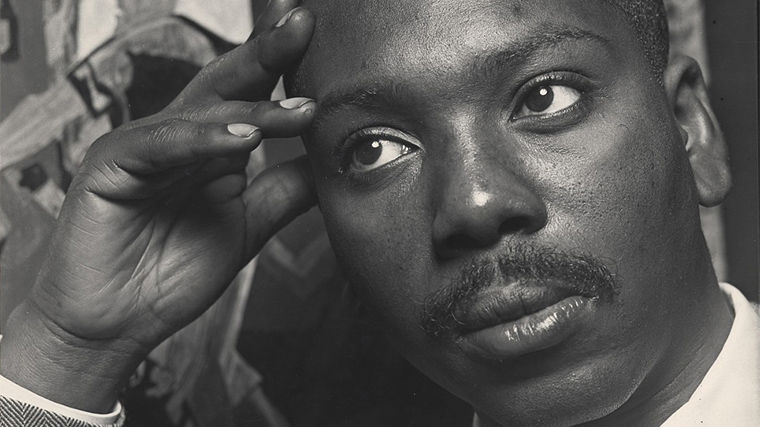Returned to lender The Met accepts temporary loans of art both for short-term exhibitions and for long-term display in its galleries.
Of the Senate House, the President's Palace, the barracks, the dockyard ... nothing could be seen except heaps of smoking ruins.... -A British Officer at Washington, 1814
Jacob Lawrence American
Not on view
British military officer George Robert Gleig recorded (and later published) a vivid eyewitness account of the British military’s total destruction of Washington, D.C., in 1814. Lawrence drew from Gleig’s prose to recreate and interpret this nightmarish episode. The painter’s typically vibrant palette gives way in this blunt, austere composition, which portrays the night as a dark trap—a narrow space bound and lit by firing cannons on one side and marked by a massive wall of rubble on the other. The mortally wounded body of a small black-and-white bird in the left corner of the painting alludes to the dangerous predicament of Washington’s civilian population, confined within the burning city.
Due to rights restrictions, this image cannot be enlarged, viewed at full screen, or downloaded.



